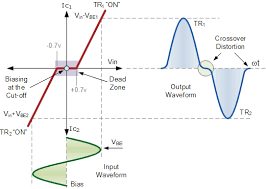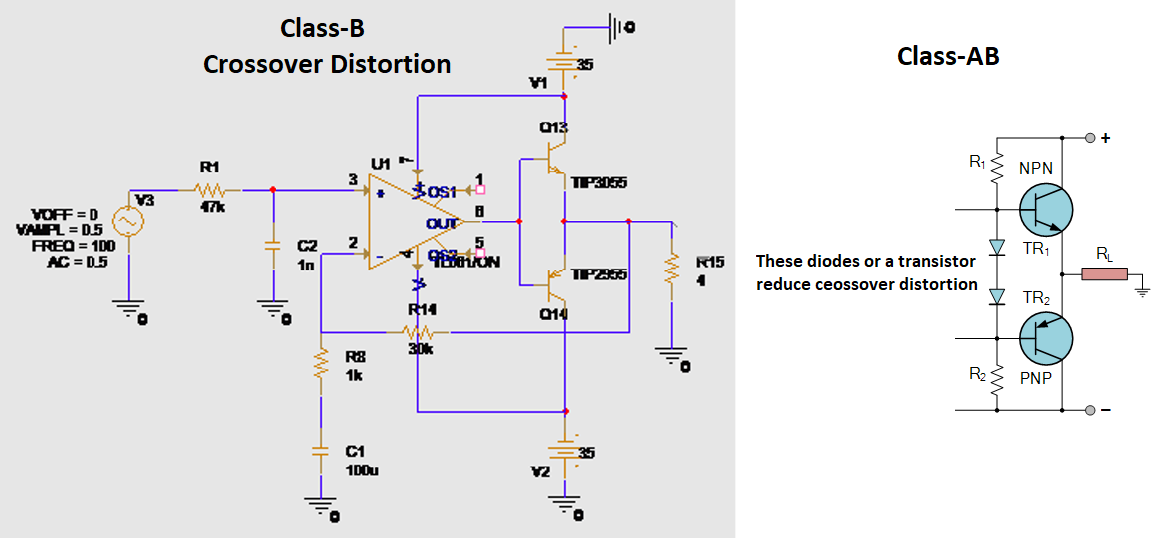Could anyone explain why the output waveform is different from the
desired crossever distortion waveform?
Note that in linear applications, cross-over distortion is not desired - it is regarded as a disturbing effect that deviates from desired linearity.
You can see below how the op amp tries to compensate for the cross over effect caused by the two output transistors (see the waveform Vdrive). Op amp gain overcomes much of the cross over problem by slewing its output quickly to provide base current drive so that output waveform Vout follows input waveform Vin.
The op amp is never entirely successful in eliminating the cross over effect, since its slew rate is not infinitely-fast, and its gain is finite. The green waveform (Vout) shows remnants of cross over distortion that the op amp is unable to eliminate. The cross over effect is best seen with a small-amplitude input waveform:

There are other problems with your circuit.
Few op amps will withstand \$\pm 35 V\$ power supplies. Furthermore, with a 4-ohm load, many op amps cannot supply enough output current to the bases of the driver transistors for large signal peaks.






